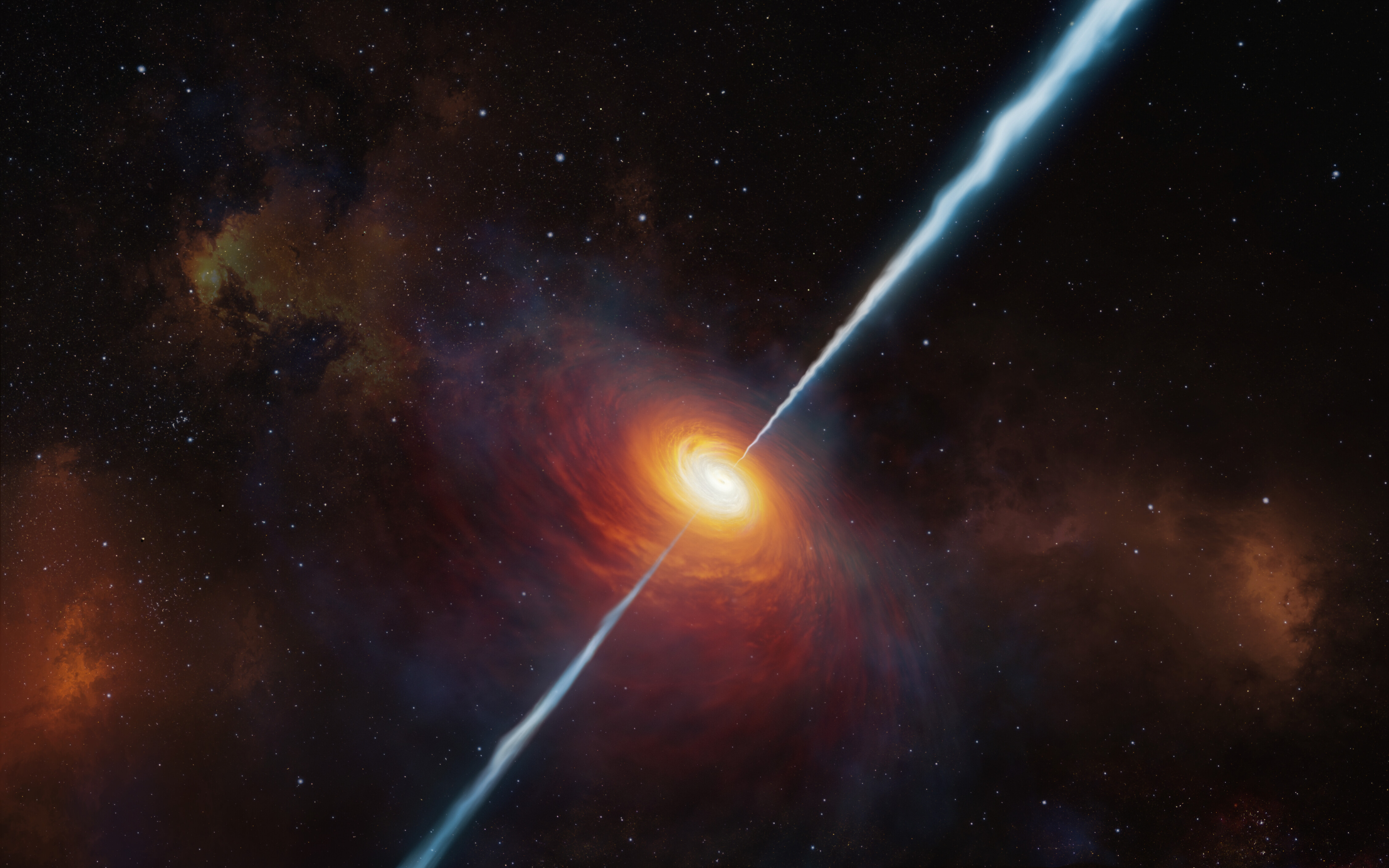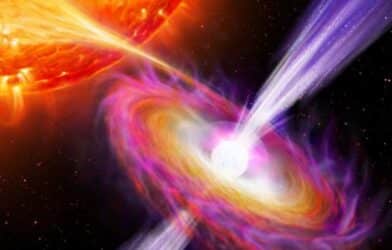Scientists have solved one of the biggest mysteries of quasars, the brightest and most powerful objects in the universe, by discovering that they are ignited by colliding galaxies. This groundbreaking discovery was made by researchers at the Universities of Sheffield and Hertfordshire using deep imaging observations from the Isaac Newton Telescope in La Palma.
What Are Quasars?
Quasars are extremely bright celestial objects that emit a massive amount of energy in the form of radiation. They are powered by supermassive black holes at the centers of galaxies and can shine as brightly as a trillion stars packed into a volume the size of our solar system.
Quasars play a vital role in our understanding of the universe’s history and the future of our own galaxy, the Milky Way.
Colliding Galaxies: The Key to Quasar Activity
For decades, it remained a mystery what could trigger such powerful quasar activity. The new research reveals that it is a result of galaxies crashing into one another. These collisions cause the gas orbiting at large distances from galaxy centers to be driven towards the central black hole. Just before the gas is consumed by the black hole, it releases extraordinary amounts of energy in the form of radiation, resulting in the characteristic quasar brilliance.
Quasar ignition can have dramatic consequences for entire galaxies, driving the remaining gas out of the galaxy and preventing it from forming new stars for billions of years.
The study is the first time that a sample of quasars of this size has been imaged with such sensitivity. By comparing observations of 48 quasars and their host galaxies with images of over 100 non-quasar galaxies, researchers concluded that galaxies hosting quasars are approximately three times more likely to be interacting or colliding with other galaxies.
Professor Clive Tadhunter from the University of Sheffield’s Department of Physics and Astronomy said, “Quasars are one of the most extreme phenomena in the Universe, and what we see is likely to represent the future of our own Milky Way galaxy when it collides with the Andromeda galaxy in about five billion years.”
Studying the History of the Universe
Quasars are important to astrophysicists because they act as beacons to the earliest epochs in the universe’s history due to their brightness.
Dr. Jonny Pierce, a Post-Doctoral Research Fellow at the University of Hertfordshire, explains, “One of the main scientific motivations for NASA’s James Webb Space Telescope was to study the earliest galaxies in the Universe, and Webb is capable of detecting light from even the most distant quasars, emitted nearly 13 billion years ago. Quasars play a key role in our understanding of the history of the Universe, and possibly also the future of the Milky Way.”
The Isaac Newton Telescope (INT) is a 2.54-meter optical telescope located at the Roque de los Muchachos Observatory on La Palma, one of the Canary Islands in Spain. It was originally built in 1967 at the Royal Greenwich Observatory in England, but was later moved to its current location in 1984 due to unfavorable observing conditions in the United Kingdom.
The INT is named in honor of Sir Isaac Newton, the famous English physicist, mathematician, and astronomer. Operated by the Isaac Newton Group of Telescopes, the INT is used by astronomers to study various celestial objects and phenomena, including galaxies, quasars, and supernovae. The telescope is equipped with advanced instruments, such as the Wide Field Camera, which allows researchers to capture deep and wide-field images of the sky.










-392x250.png)


Comments